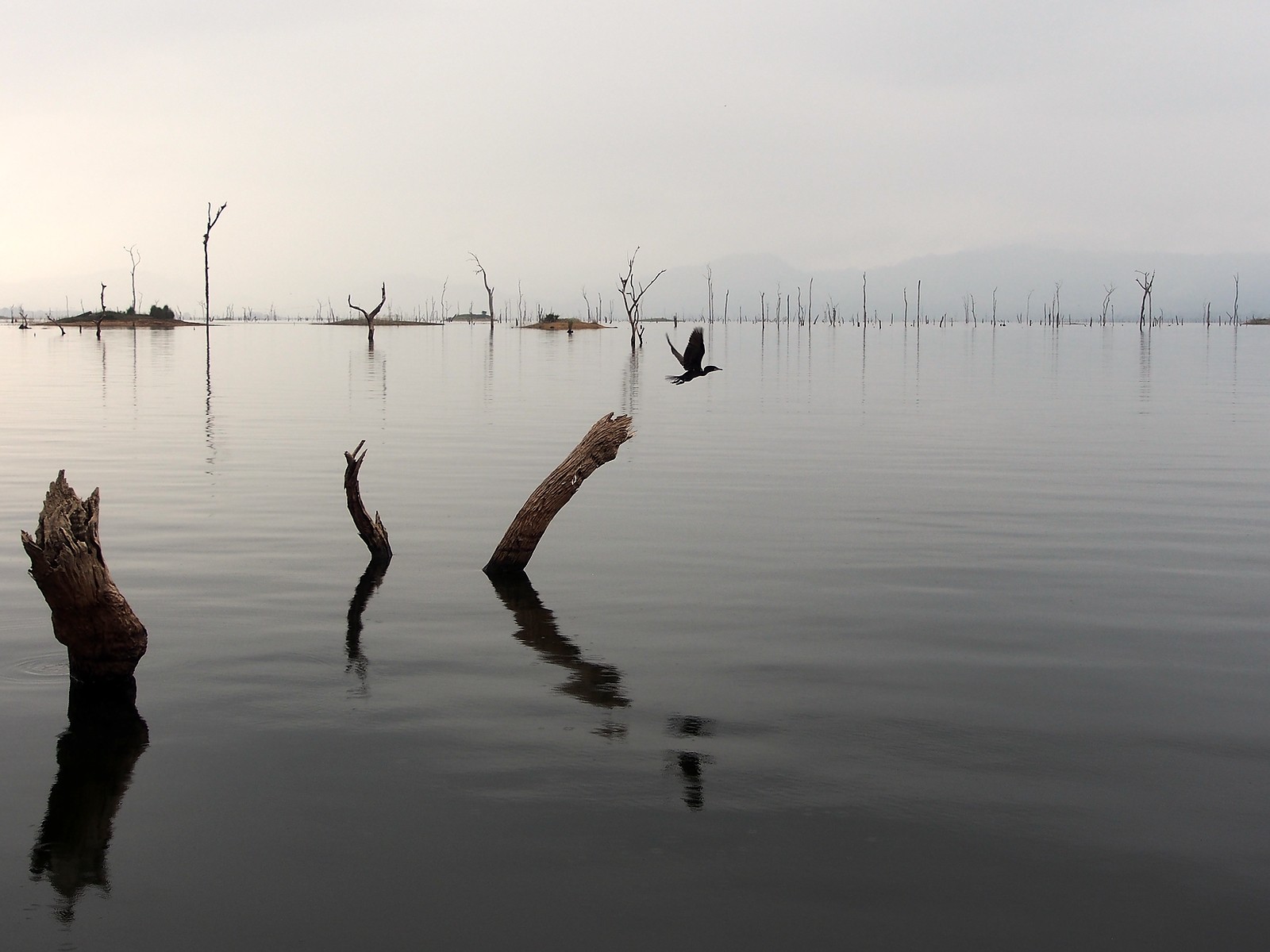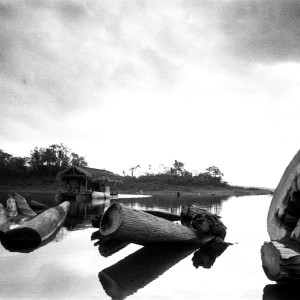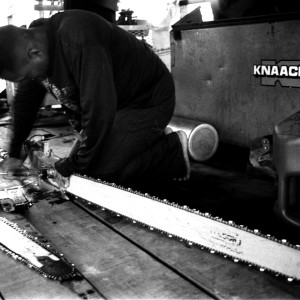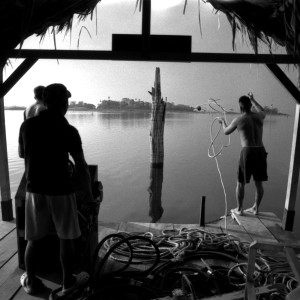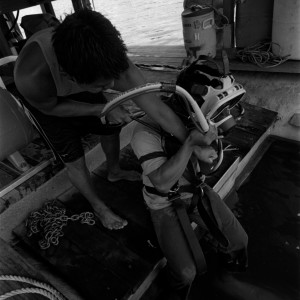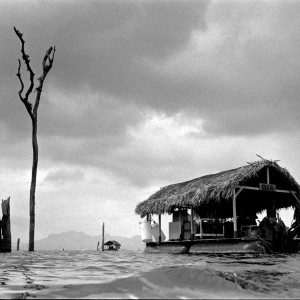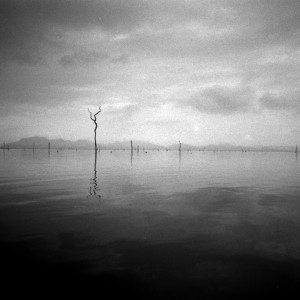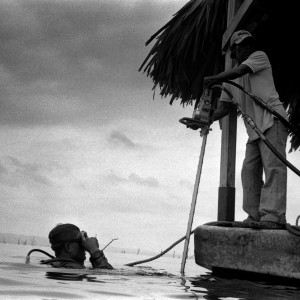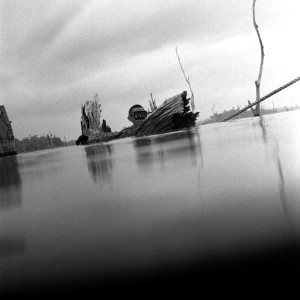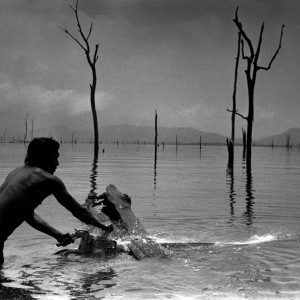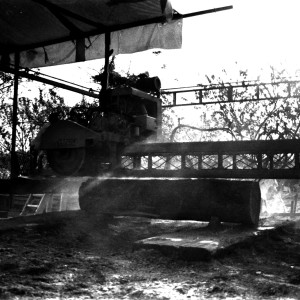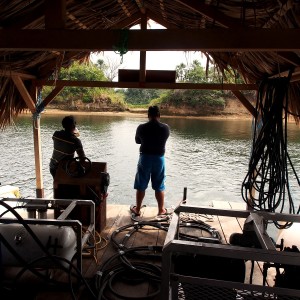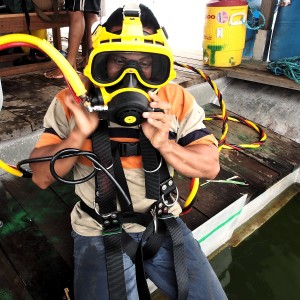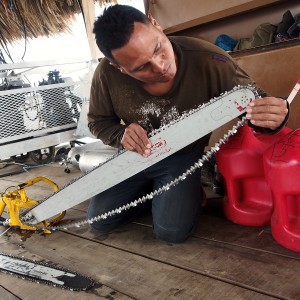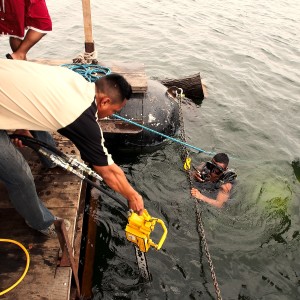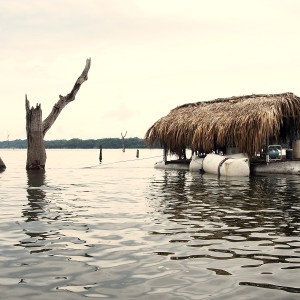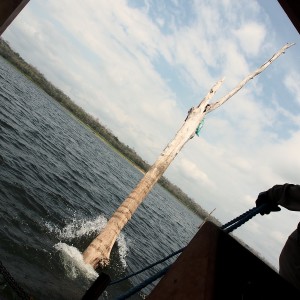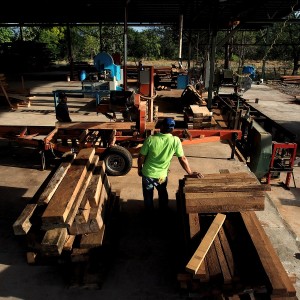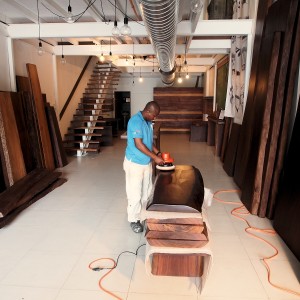in collaboration with CoastEcoTimber, the Alliance Française du Panama, and with the support of the French and Canadian embassies…
Tempo: March and October 2013
Locus: Lago Bayano, Panama
Official press release of the exhibition, October 2013: “This exhibition presents Canadian company CoastEcoTimber’s work salvaging dead (but still standing) trees in Lake Bayano, in northeast Panama. This 350 square-km man-made reservoir takes its namesake from the 16th century runaway slave Bayano and provides 10% of the Panama’s energy demand through the country’s second-largest hydroelectric plant operated by AES. French-born photographer Arnaud De Grave worked and lived with the diver-loggers for two weeks, sharing their daily activities on and under the water. Arnaud’s work illustrates some important aspects of CoastEcoTimber’s efforts in the environmental, social and ethical aspects of forestry certification. The photographer’s modus operandi is inspired by ethnographic photo-reporters and is based entirely on analogue photography developed and printed by hand in a darkroom.” The pictures presented here are a wider selection of shots than the actual fiber 20 paper prints (30x40cm) of the exhibition, and also contains picture taken when Arnaud went back to the lake for a couple of times during the exhibition set-up days.
An article was written and published in the newsletter of the Faculty of Forestry at UBC Vancouver, issue 25#2, summer 2014. It can be read and downloaded on the Branchlines’ page at the website of the faculty [direct link to the pdf]. Arnaud De Grave would like to thank everyone who, one way or the other, helped him for this project.
One can have a look at desaturated digital shots of the actual prints on the website of the BOP association, together with pictures of the exhibition set-up, here.
Tempo: Mars et octobre 2013
Locus: Lago Bayano, Panama
Cette exposition présente le travail de la compagnie canadienne CoastEcoTimber dans leurs action pour récolter les arbres morts (mais toujours sur pied) dans le lac Bayano, au nord-est du Panama. Ce lac de 350km-carrés doit son nom à un esclave qui s’est évadé au 16ème siècle. Il a été en créé en 1976 comme réservoir pour un barrage hydroélectrique, maintenant géré par la compagnie EAS il est responsable de 10% de la production électrique du pays. Arnaud De Grave a travaillé et vécu avec les plongeurs-bucherons pendant deux semaines, partageant leurs activités quotidiennes sur et sous l’eau. Son travail illustre certains des aspects importants des efforts de CoastEcoTimber dans les domaines de la certification de l’industrie du bois : l’environnement, le social et l’éthique. Le travail photographique est inspiré par le photo-reportage ethnographique et les photographies sont issues d’une chaine entièrement analogue : depuis la prise de vue avec du négatif noir et blanc, en passant par le développement et le tirage en chambre noire. Les photos ici présentées sont des photographies digitales dé-saturées des tirages (30x40cm papier baryté) de l’exposition. Arnaud De Grave est retourné sur les lieux en octobre 2013 à l’occasion de l’exposition, les photos présentées ici sont issues des deux séjours.
Un article a été publié dans Branchlines, le magazine de la Faculté de Foresterie de UBC Vancouver, il est lisible en ligne (et en anglais) sur le site du magazine [lien direct vers le pdf]. Arnaud De Grave voudrait remercier toutes les personnes qui ont facilité d’une manière ou d’une autre la réalisation de ce projet.
Des photos digitales désaturées sont visibles sur le site de l’association BOP ainsi que quelques images de l’accrochage dans les bâtiments de l’Alliance Française du Panama, ici.
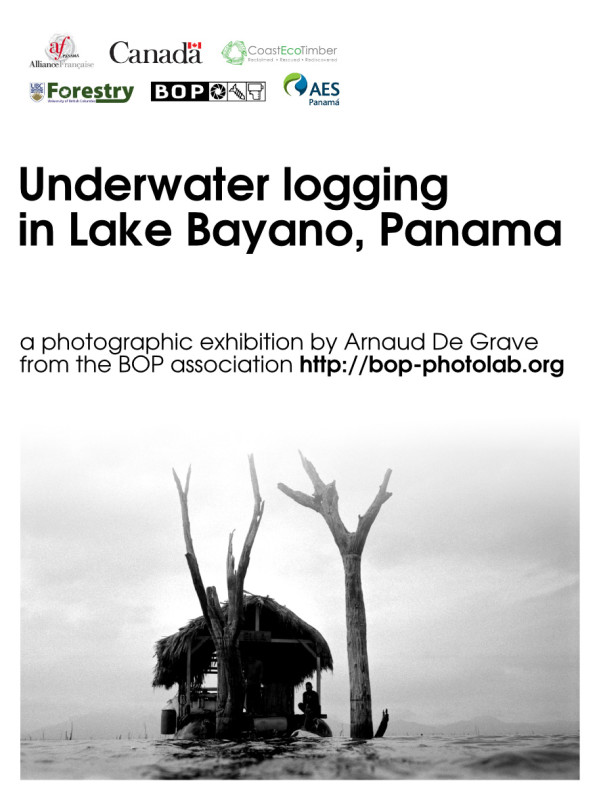
Black and white 135 (Olympus OM2, Voigtländer Bessa R3m, Nikonos V):
—
Colour digital pictures (Olympus OM-D):
—
–##– More images –##–
